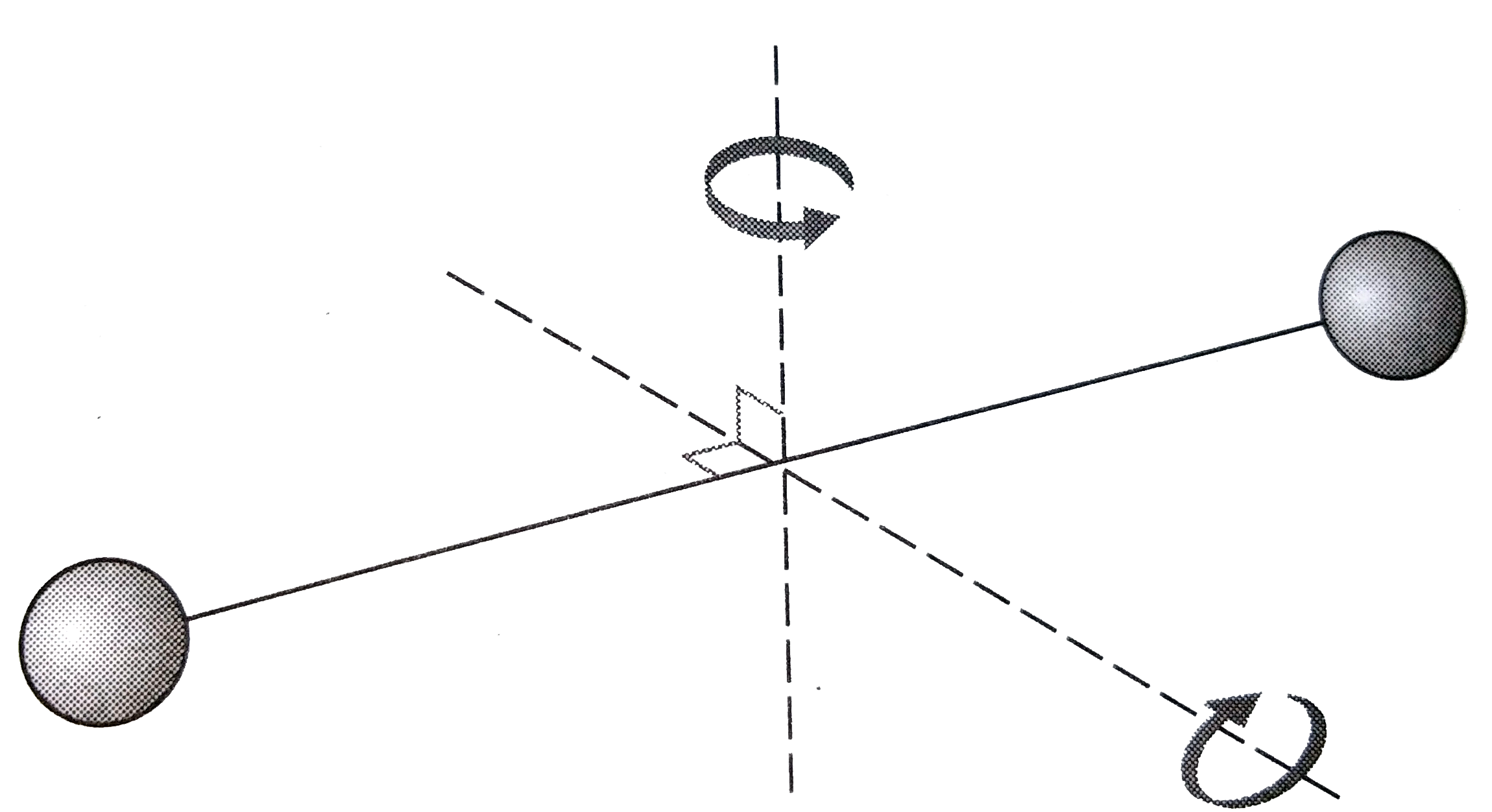Explain the degrees of freedom for
(i) An atom
(ii) A diatomic molecule.
Video Solution
Text Solution
Gas molecules of all types have p and z-components of velocity that are entirely independent of one another. Thus, they have three degrees of translational freedom
An atom (or a monatomie molecule), treated as a point mass, has no rotational energy Hence, it has only three degrees of translational freedom.
A diatomic molecule, in addition to translation, can rotate about axes perpendicular to the line connecting the atoms, as shown in the following figure, but not about that line itself. Therefore, it has only two degrees of rotational freedom.

Further, there is the possibility of vibrational motion in which the two atoms oscillate alternately toward and away from one another along the line joining them, as if attached to opposite ends of a spring. Because a harmonic oscillator can have potential energy and kinetic energy, a diatomic molecule is regarded to have two degrees of vibrational freedom. Thus, at high enough temperatures, a diatomic molecule has seven degrees of freedom : three of translation, two each of rotation and vibration.
|
Topper's Solved these Questions
- EXPLANATION, CHARACTERISTICS AND PROPERTIES Book:NAVNEET PUBLICATION - MAHARASHTRA BOARDChapter:EXPLANATION, CHARACTERISTICS AND PROPERTIES Exercise:Wave Theory of light
Explore 3 Videos
- EXPLANATION, CHARACTERISTICS AND PROPERTIES Book:NAVNEET PUBLICATION - MAHARASHTRA BOARDChapter:EXPLANATION, CHARACTERISTICS AND PROPERTIES Exercise:Interference and Diffraction
Explore 2 Videos
- EXPLANATION, CHARACTERISTICS AND PROPERTIES Book:NAVNEET PUBLICATION - MAHARASHTRA BOARDChapter:EXPLANATION, CHARACTERISTICS AND PROPERTIES Exercise:Stationary Waves
Explore 5 Videos
- EXPERIMENTS AND DIAGRAMSBook:NAVNEET PUBLICATION - MAHARASHTRA BOARDChapter:EXPERIMENTS AND DIAGRAMSExercise:ATOMS, MOLECULES AND NUCLEI
Explore 1 Video
- INSTRUMENTS : CONSTRUCTION AND WORKING Book:NAVNEET PUBLICATION - MAHARASHTRA BOARDChapter:INSTRUMENTS : CONSTRUCTION AND WORKING Exercise:Semiconductors
Explore 6 Videos
Similar Questions
Knowledge Check
Degree of freedom for Diatomic gas is
A3B5C8D7The degrees of freedom of a triatomic gas is
A2B4C6D8The number of degrees of freedom for a rigid diatomic molecule is
A3B5C6D7
State the types of degrees of freedom of non-rigid diatomic molecules.
View SolutionFind the degrees of monoatomic, diatomic and triatomic gas molecules.
View SolutionDegree of freedom for Monoatomic gas is,
View SolutionThe degree of freedom of a:Triatomic gas is
View SolutionThe number of degrees of freedom for a rigid diatomic molecule is
View Solution

